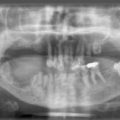Chapter 7. A radionuclide is an unstable isotope of an element that will spontaneously ‘decay’ by the emission of particles and/or electromagnetic radiation. The three most common emissions from radionuclides are alpha and beta particles and gamma rays. There are two types of beta particle, beta minus (β−) and beta plus (β+), they are both electrons with a negative and positive charge, respectively. A beta plus is referred to as a positron. A gamma ray is a form of electromagnetic radiation and is the only one with sufficient penetrating characteristics to enable it to be detected externally if originating from within the body. Most use is made of a relatively limited number of radionuclides that emit only gamma rays. However, there is a growing use of radionuclides that decay by emitting a positron; this particle is not penetrating but interacts with an electron, both annihilating to form two photons travelling in opposite directions. These photons are penetrating and can be detected as they leave the body. A radionuclide is attached, or labelled, to a pharmaceutical, forming a radiopharmaceutical. This is introduced into the body, most commonly by intravenous injection but also by ingestion and inhalation, and has a known biodistribution in the body. The distribution of the radiopharmaceutical is related to the physiology or function of an organ, tissue or tissue type; this is in contrast to x-ray, MR or ultrasound imaging which, to a large extent, images structure.
Gamma rays are imaged by a device known as a gamma camera. The device used to detect annihilation photons resulting from the decay of a radionuclide emitting positrons is referred to as a PET camera. Gamma cameras are a large area detection device capable of forming an image of the distribution of a radionuclide within the body. The majority of devices have two detector heads, although it is possible to purchase single or triple head equipment. Imaging with a gamma camera can take place with the detector heads in a stationary position, planar mode, or with the detector heads moving around the body through, typically, 180° or 360°. This mode of acquisition is known as single photon emission computerized tomography (SPECT) or, dropping the reference to computerization (SPET). PET cameras work on the basis of a series of rings of stationary detectors, identifying the location of a nucleus decaying via positron emission, by detection of both annihilation photons within a predefined time (nanoseconds). This is sometimes referred to as coincidence imaging.
The most up-to-date gamma cameras and all PET cameras are now manufactured with an x-ray CT imaging device incorporated into the gantry. In both cases, the primary purpose of this ancillary facility is to allow the use of the structural CT (transmission) images to be converted into an attenuation map [
Stay updated, free articles. Join our Telegram channel

Full access? Get Clinical Tree




